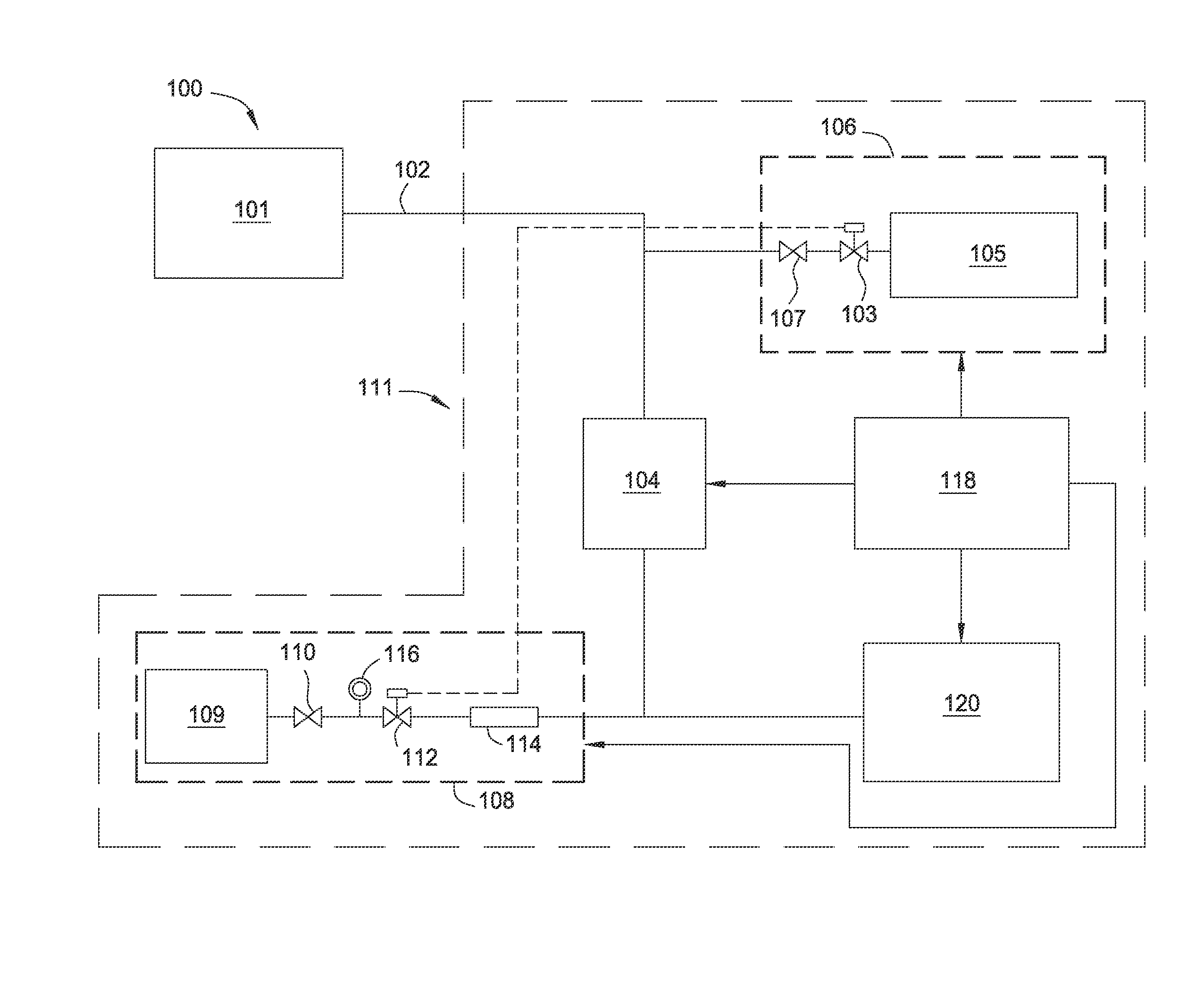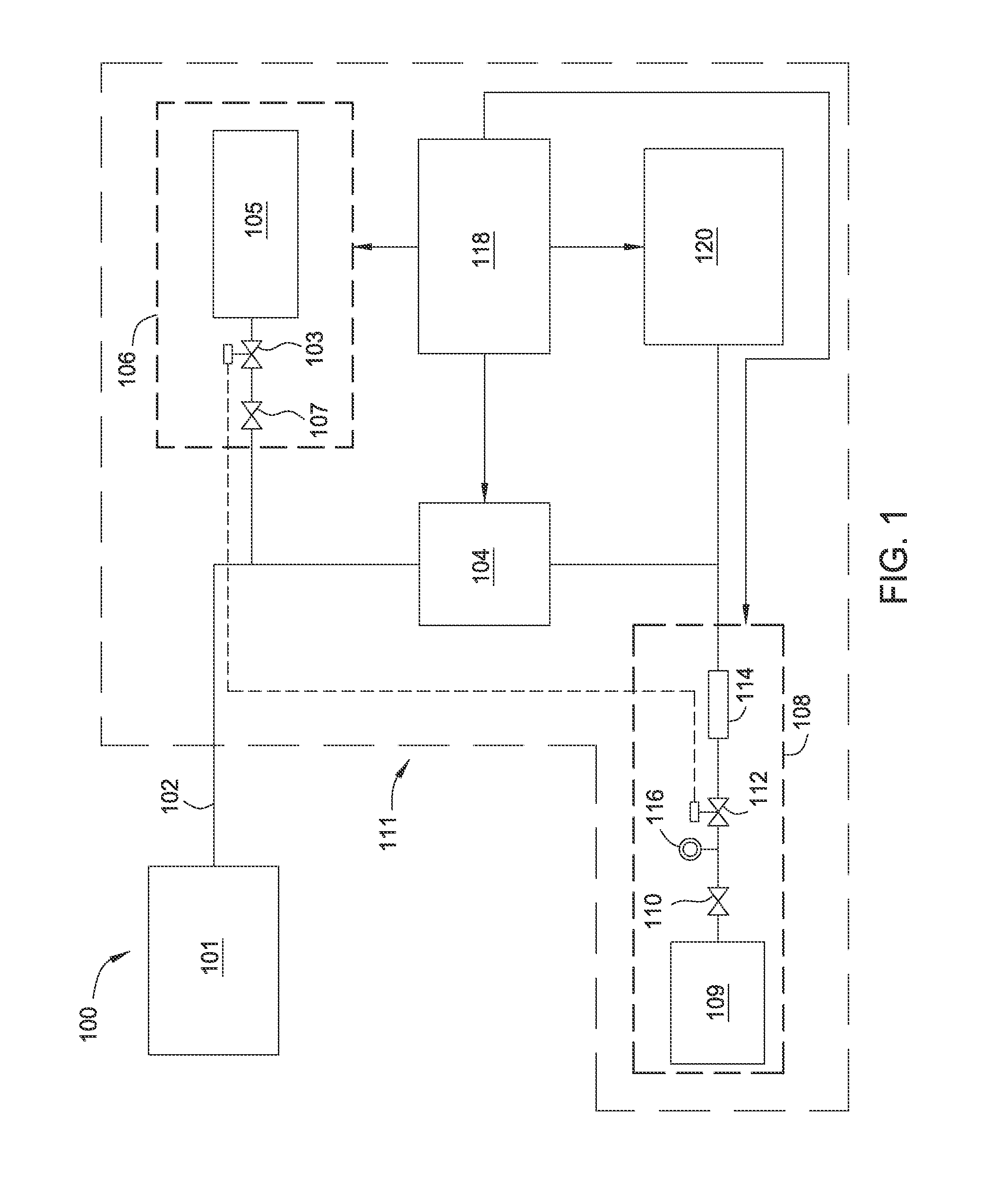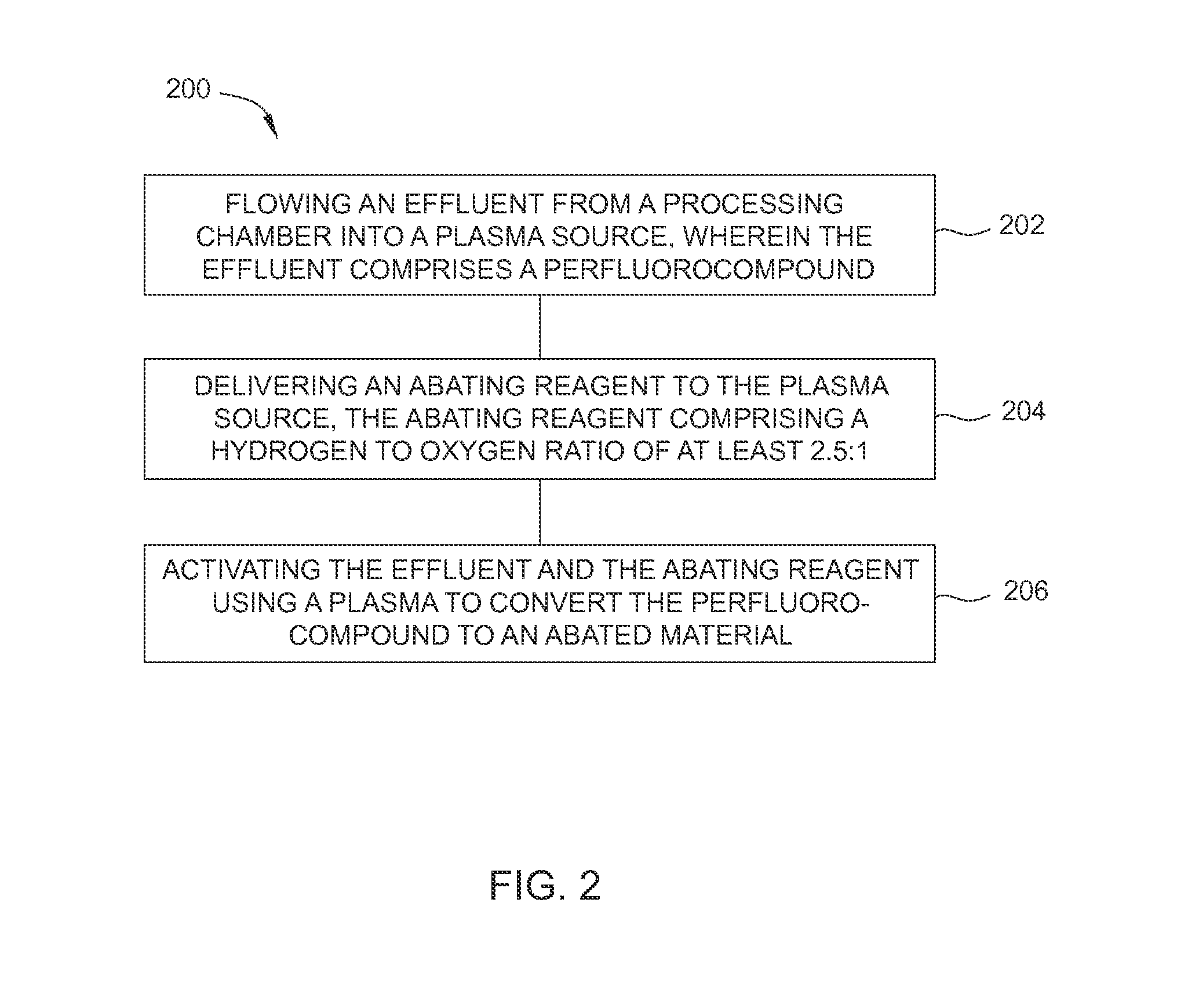Plasma abatement using water vapor in conjunction with hydrogen or hydrogen containing gases
a technology of water vapor and hydrogen containing gas, which is applied in the direction of climate sustainability, electric discharge tubes, greenhouse gas capture, etc., can solve the problems of undesirable release into the environment, difficult removal of pfcs from effluent, etc., and achieve the effect of improving the maintenance interval of supporting equipment and maintaining effective pfc abatement performan
- Summary
- Abstract
- Description
- Claims
- Application Information
AI Technical Summary
Benefits of technology
Problems solved by technology
Method used
Image
Examples
Embodiment Construction
[0016]Implementations disclosed herein include a plasma abatement process for materials present in an effluent exiting a processing chamber. A plasma abatement process takes foreline effluent from a processing chamber, such as a deposition chamber, an etch chamber or other vacuum processing chamber, and reacts the effluent with an abating reagent within a plasma chamber placed in the foreline path. The plasma energizes the materials present in the effluent as well as the abating reagent, making conversion of the material into a more benign form more efficient. In some implementations, the plasma may at least partially dissociate the materials present within the effluent and the abating reagent, which increases the efficiency of the conversion of the materials within the effluent into more benign forms. An abating reagent, such as water, may assist in the abating of the materials present within the effluent.
[0017]In implementations described herein, excess hydrogen can be added to th...
PUM
 Login to View More
Login to View More Abstract
Description
Claims
Application Information
 Login to View More
Login to View More - R&D
- Intellectual Property
- Life Sciences
- Materials
- Tech Scout
- Unparalleled Data Quality
- Higher Quality Content
- 60% Fewer Hallucinations
Browse by: Latest US Patents, China's latest patents, Technical Efficacy Thesaurus, Application Domain, Technology Topic, Popular Technical Reports.
© 2025 PatSnap. All rights reserved.Legal|Privacy policy|Modern Slavery Act Transparency Statement|Sitemap|About US| Contact US: help@patsnap.com



